In This Post
Cottage Industry in Pakistan
Handicrafts of Pakistan
Carpets
Earthen Pots (Matkas)
Glazed Tiles
Cotton Garments
Camel Lamps
Khussa
Peshawari Chappal
Wood Carvings
Ethnic Jewellery
The handicraft industry of a country deeply reflects its culture. Like other visual arts, handicrafts of Pakistan are the expression of thoughts and feelings of the craftsmen, influenced by their environment, cultural and social patterns.
The tradition of making handicrafts in the region dates back to ancient times.
Cottage and Other Small Scale Industries in Pakistan
The climate, ecological and geophysical conditions of a particular region determine the lifestyle of the local people, adding new colours to the cottage industry of Pakistan. However, in the case of a country like Pakistan, a cottage or household industry cannot be distinguished from handicrafts.
A large part of the population of Pakistan lives in the rural areas. These people have developed a self-sustaining or self-sufficient lifestyle. Many run their households by working in the cottage industry as craftsmen, carpenters, cotton weavers, potters and cobblers. Women also play a great role in creating handicrafts in Pakistan, exhibiting their extraordinary talent and skills.
The 9 Most Admirable Handicrafts of Pakistan

Handicrafts of Pakistan are internationally popular because of their striking appearance, alluring hues and magnetizing textures. What’s more, these unique works of craft add to the country’s name on a global scale. So, let’s dig deep and fetch more information about each of the articles that we have listed below:
- Carpets
- Earthen Pots (Matkas)
- Glazed Tiles
- Cotton Garments
- Camel Lamps
- Khussa
- Peshawari Chappal
- Wood Carvings
- Ethnic Jewellery
Note: The estimated price range for each of these articles mentioned below may vary depending on the region.
Carpets
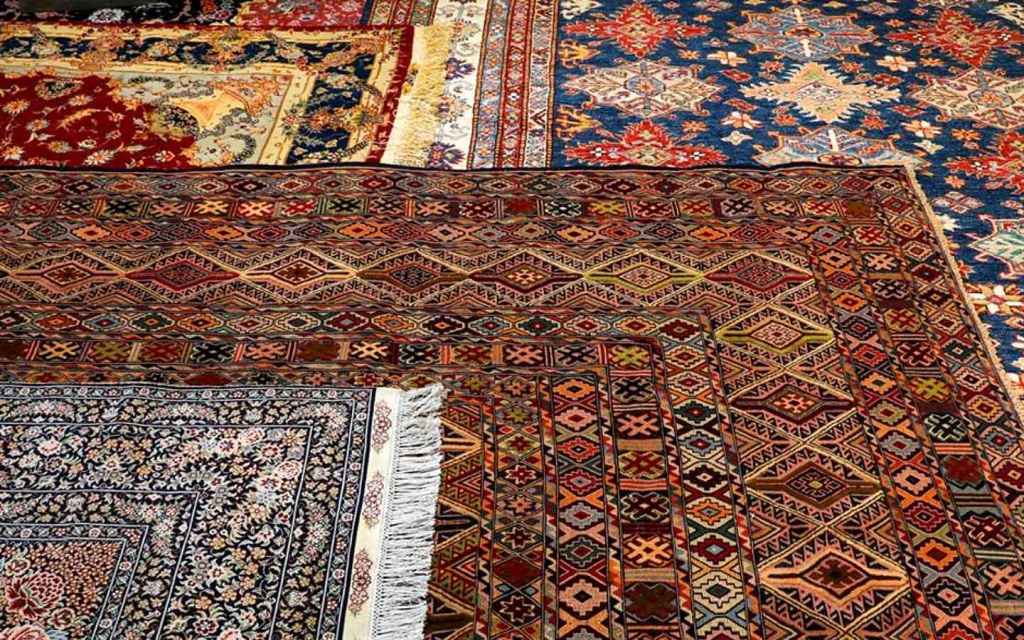
Known as the biggest handicraft industry in Pakistan, carpet making accounts for a large part of foreign exchange earnings. The art of carpet weaving in Pakistan has been greatly influenced by the cultures of other Muslim countries like Saudi Arabia, Iran and Turkey.
In the region of South Asia, carpet making was introduced by Akbar the Great, a Mughal Emperor who remained in power from 1556 AD till 1605 AD. The city of Lahore has continued to be the key centre of this art from centuries.
Since the very beginning, craftsmen use Persian style techniques for carpet weaving in Pakistan. The raw materials used in the handmade items such as carpets include silk, wool and synthetic fiber. Pakistan exports 90% of the hand knotted carpets around the world. USA, Germany and Japan are the three chief importers of carpets from Pakistan.
Estimated Price Range: From PKR 12,000 to PKR 50,000
Earthen Pots
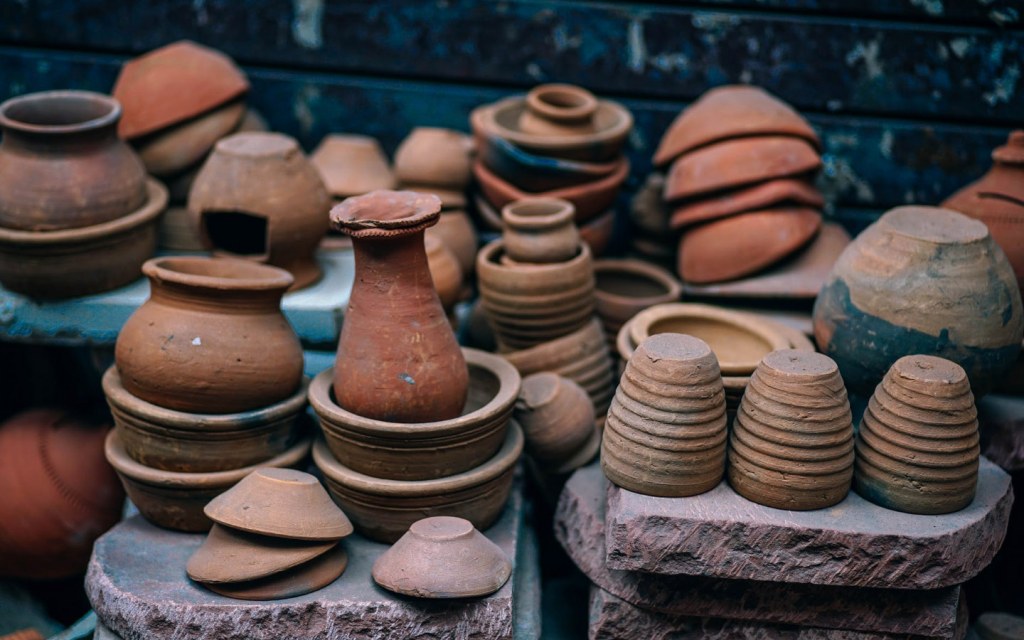
Pottery making in the region of South Asia is an ancient skills. The people in Pakistan are engaged in making earthen pots (Matkas) on the pattern of their predecessors. Many artifacts including earthen pots and other items made from clay are on display in museums.
People living in the rural areas of Pakistan use earthen pot (Matka) to store water at homes. The types of handmade items based on earthenware found in this region are very unique and it hardly exist in any other part of the world. The capital of production of these handicrafts in Pakistan include the names of cities like Peshawar, Bahawalpur, Hala, Nasarpur and Shehwan.
Estimated Price Range: From PKR 150 to PKR 1,500
Glazed Tiles
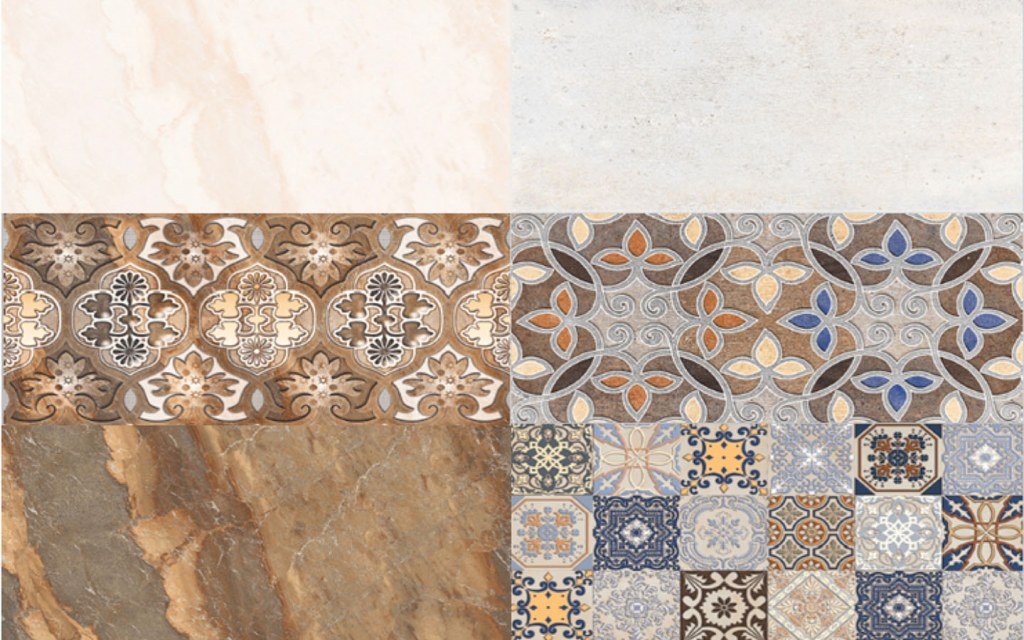
Another very famous Pakistani hand-made article is the glazed tile. Nasarpur, Hala and Multan are its important centres. The design work on these tiles is known as Kashi. Kashi is a name that is driven from the city of Kashan in Iran, which is a very famous centre for the production of glazed tiles.
In Pakistan, these tiles are used in the exterior decoration of mosques in Sindh and southern Punjab to enhance the beauty of these structures.
Estimated Price Range: From PKR 250 to PKR 1,700 per square metre
Cotton Garments
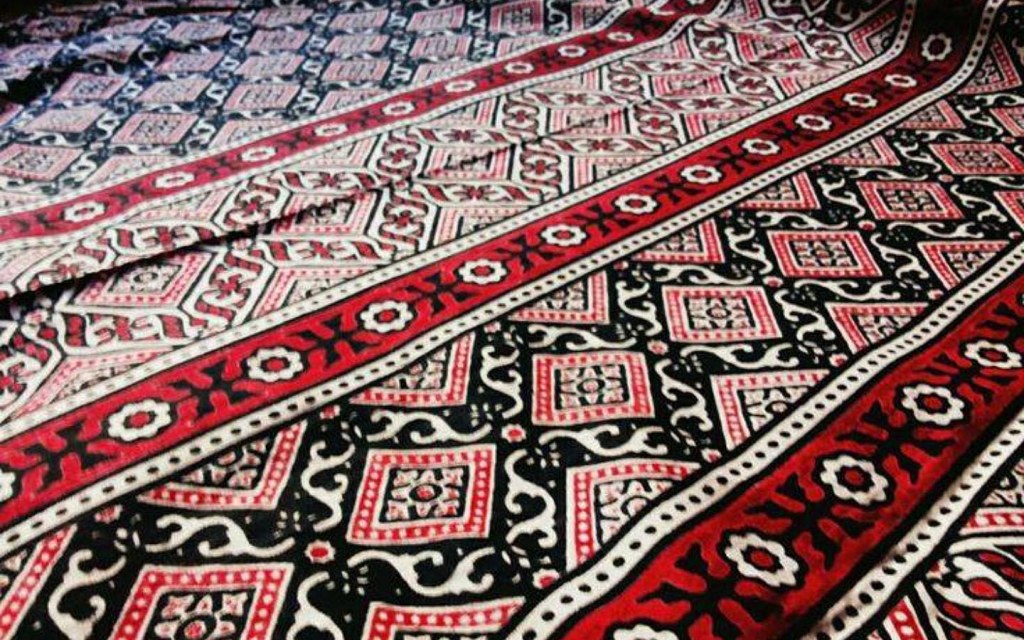
Pakistan is the land of silver fiber as the most ancient samples of cotton and cotton clothes are found in this region. Khaddar, which is prepared from cotton fiber, is very popular for daily wear. This fabric absorbs heat. It’s usually worn during winters or in northern areas.
According to a 2017 report of Pakistan Business Council, Pakistani garments make a total of 1.10% of the global garments exports.
Rilli, Khais and Susi are the cotton carpets made in the villages of Sindh and Punjab. The province of Sindh is also famous for Ajrak, which is a beautiful multipurpose cotton garment with block printed design. All of these locally produced cotton products remain in great demand and are counted among some of the best handicrafts of Pakistan.
Estimated Price Range: From PKR 140 to 400 per metre
Camel Lamps
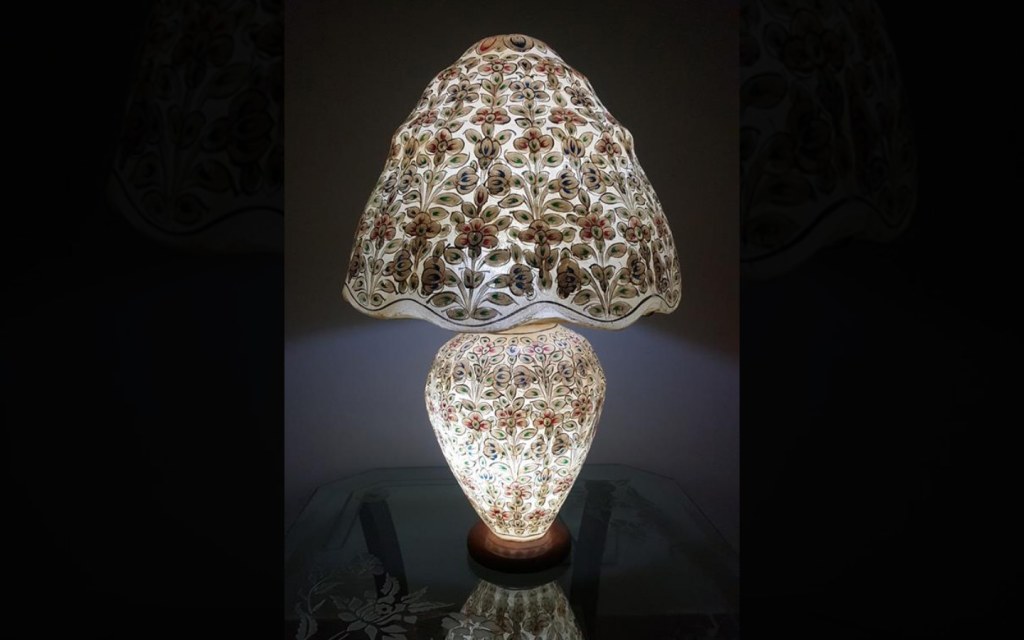
The lamps prepared from camel hide look exceptionally beautiful when illuminated at night. The city of Multan is famous all over the world for this handicraft. Camel lamps are produced with the help of camel skin, which is usually received from the Cholistan desert. It’s washed, dried and then molded into the desired form.
After these lamps are given a particular shape, they are painted with delightful hues. The designs on the camel lamps greatly reflect the traditional Multani culture and are one of the most sought after decorative items used at homes.
Estimated Price Range: From PKR 10,000 to PKR 35,000 per piece
Khussa
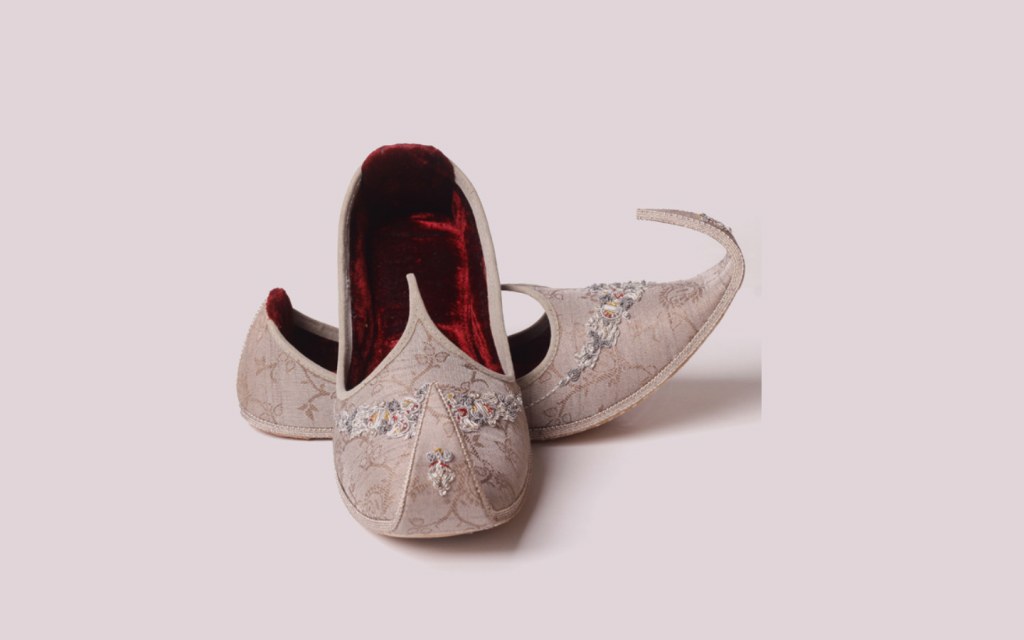
Khussa is counted among the most famous hand-crafted products in Pakistan. The Mughal Emperor Jehangir, who was known as Prince Saleem before his reign, was responsible to introduce this novel fashion in the shoemaking industry of South Asia.
The craftsmanship of the people of Pakistan is admired all around the world and Pakistan’s total share is 0.001% in the global footwear export. These figures may rise over the course of time, since the local footwear market of Pakistan holds great potential.
In Pakistan, khussa was initially introduced in the villages of Punjab. It is a type of shoe that quickly gained popularity and this fashion of rural Punjab was adopted by many famous cities across Pakistan including Karachi, Lahore and Islamabad. Bahawalpur is the centre of this cottage industry as it produces a wide variety of khussas having different designs and decorations.
Estimated Price Range: From PKR 800 to PKR 3,000 per pair
Peshawari Chappal
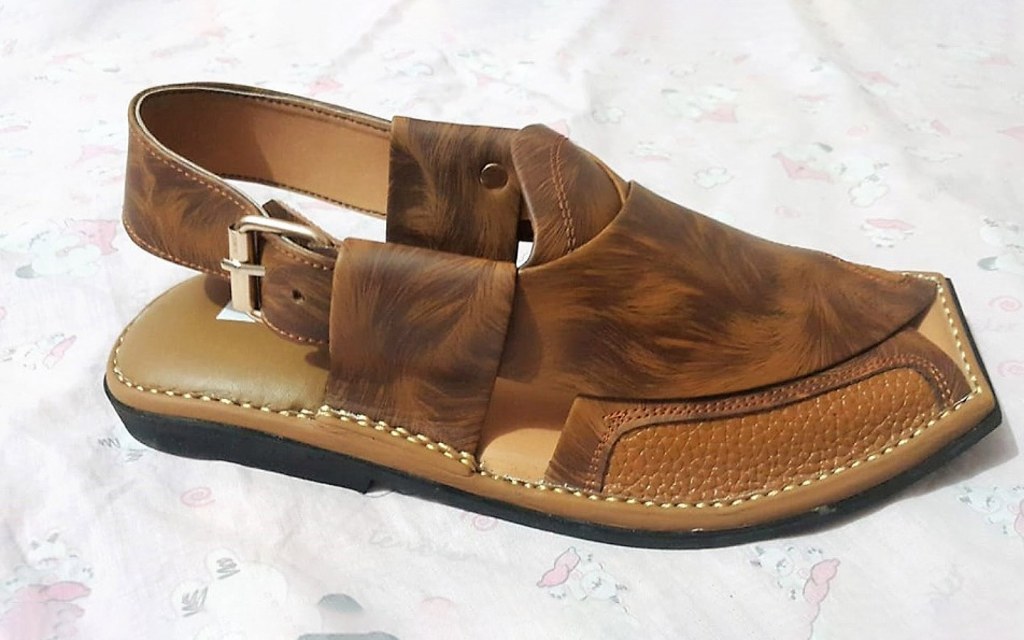
Recognized as one of the most durable Pakistani products, Peshawari Chappal is worn by a majority of men in Pakistan. The reason behind the popularity of Peshawari Chappal is that it goes perfectly well with shalwar and kameez, which is one of the national symbols of Pakistan.
The name of Peshawari Chappal itself tells us about the city of its origin. Peshawar, which is the oldest city in Pakistan, is the biggest hub of Peshawari Chappals with different shapes and designs available. This footwear is popular among men living in villages as well as cities in Pakistan.
Estimated Price Range: From PKR 1,000 to PKR 3,000 per pair
Wooden Carvings
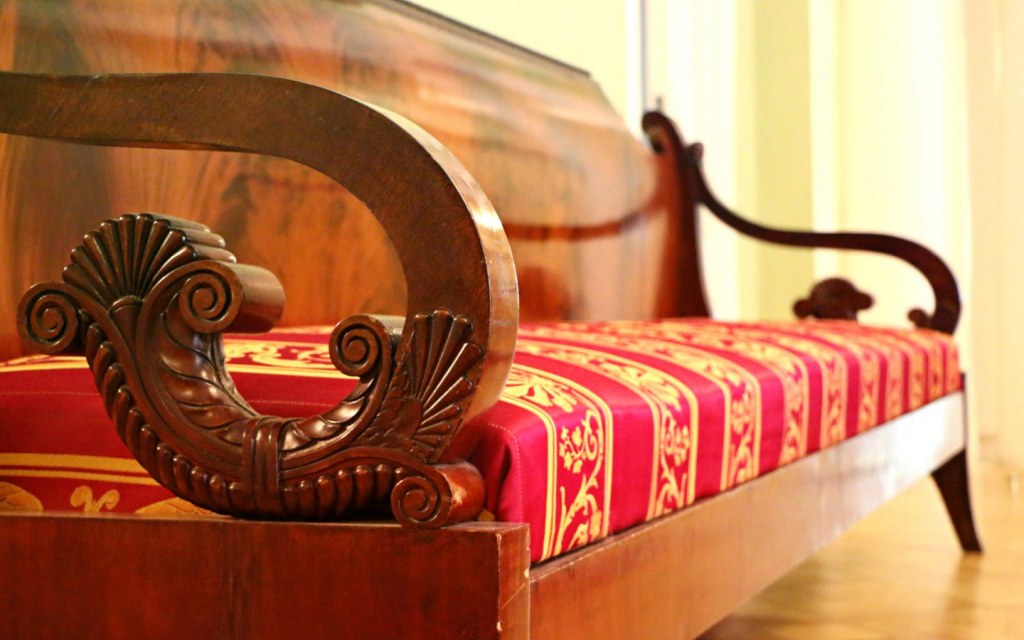
Upper Punjab and northern areas of Pakistan are blessed with thick, dense forests. These forests provide with various types of wood. Hardwood, Deodar, Walnut tree wood and softwood are a few important names to be mentioned here. Craftsmen use the art of wood carving for the manifestation of their artistry.
Muzaffarabad, the capital of Azad Kashmir, Rawalpindi, Faisalabad, Lahore and Karachi are big markets for wooden furniture and other articles made of wood. According to a report published in Business Recorder, Pakistan has the potential to earn up to $1 billion dollar from the export of handmade wood furniture. The art of wood carving has been producing fantastic masterpieces in the handicraft industry of Pakistan from decades.
Estimated Price Range of Wood Furniture: From PKR 2000 to 50,000. (Depends on the type of wooden article you’re purchasing and from which city)
Ethnic Jewellery
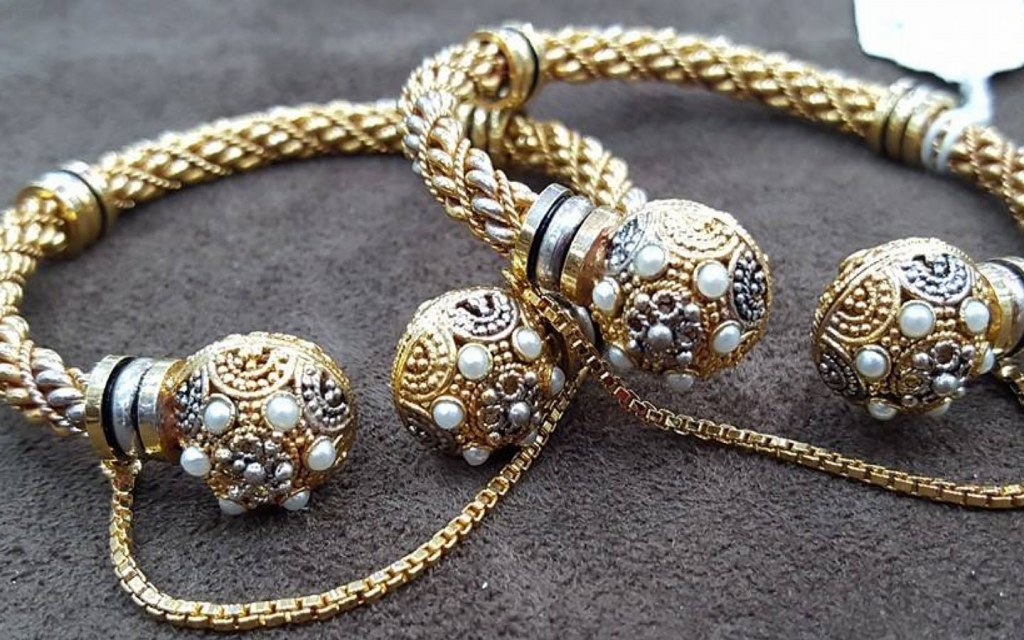
From minimalist to heavy wedding-themed goodies, you can find a range of hand-made jewellery items in Pakistan.
Jewellery is prepared by melting the metal and shaping it in different designs with the help of moulds. Different types of jewels are then fixed with the help of hands and machines to prepare beautiful ornaments.
The export of jewellery in Pakistan has gone up by 1.3% in recent years. According to a 2018 report of Daily Pakistan, jewellery exports of Pakistan amounts to a whopping $5.9 billion.
Jewellery articles prepared in the region of South Asia, specifically in Pakistan, reflect the influence of Greece, Rome, Turkey and Iran. In fact, the Kuchi headdress is one of the best and most easily recognizable of handicrafts of Pakistan.
Estimated Price Range: From PKR 5,000 to PKR 1 million
For more interesting facts about the history and traditions of our beloved homeland, keep following Zameen Blog, one of the best lifestyle and property blogs in Pakistan. Also, subscribe to our email newsletter for more interesting updates.



